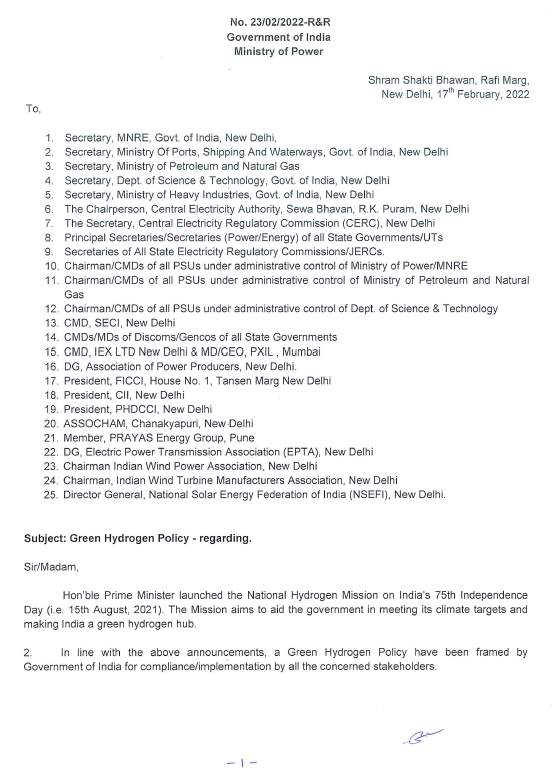Ammonia a key feature of India’s new green hydrogen policy
By Julian Atchison on February 18, 2022
India’s much-anticipated green hydrogen policy has just been released by the Ministry of Power. In a memo sent to key stakeholders, policy levers were announced that will unlock green hydrogen & ammonia production across the country. Overall, India’s government is aiming for 5 million tonnes of green hydrogen production in 2030: about 80% of what the country currently uses. The official policy announcement emphasized that the use of fossil fuel replacements like hydrogen & ammonia was key to releasing India’s national energy security. The new policy is one of the major steps in this transition.
From hydrogen obligations to unlocking production
In August last year we reported that the Modi government had launched a Green Hydrogen Consumption Obligation for the fertiliser and petroleum refining industries: targeting 0.15% next year, rising to 10% by 2030. This is similar to India’s existing Renewable Purchase Obligation, which mandates that certain entities purchase a certain % of renewable electricity for their operations. The new policy builds on these existing building blocks, as well as opening the door for ammonia exports. Key details include:
- A definition for “green” – hydrogen produced by electrolysis using renewable energy, “banked” renewable energy (see below) or biomass.
- Waiving of inter-state electricity transmission charges, as long as the hydrogen/ammonia project is commissioned before 30th June 2025. This means production facilities can access renewable electricity from across India, and that new build renewable energy capacity does not have to be co-located.
- Procured renewable energy can be “banked” for 30 days at fixed charges, allowing flexibility in production.
- Production facilities will have their requests for renewable electricity sourcing fulfilled within 15 days by central authorities. Any transmission upgrades required to connect new renewable generation will be fast-tracked.
- Land & special manufacturing zones will be set aside for green hydrogen/ammonia projects.
- Manufacturers will be able to establish bunkers/storage capabilities near ports to enable ammonia export.
- Renewable electricity used in production will count towards the entity’s Renewable Purchase Obligation.
- Distributors of green hydrogen/ammonia products will only be able to charge minimal fees (on top of their own procurement costs).
- A centralised portal will be set up to fast-track all statutory requests/permissions applied for, with all inquiries to be filled within 30 days.
- Government authorities will have oversight of the whole ecosystem, and utilise consolidated bids & demand aggregation where necessary to keep prices competitive.
